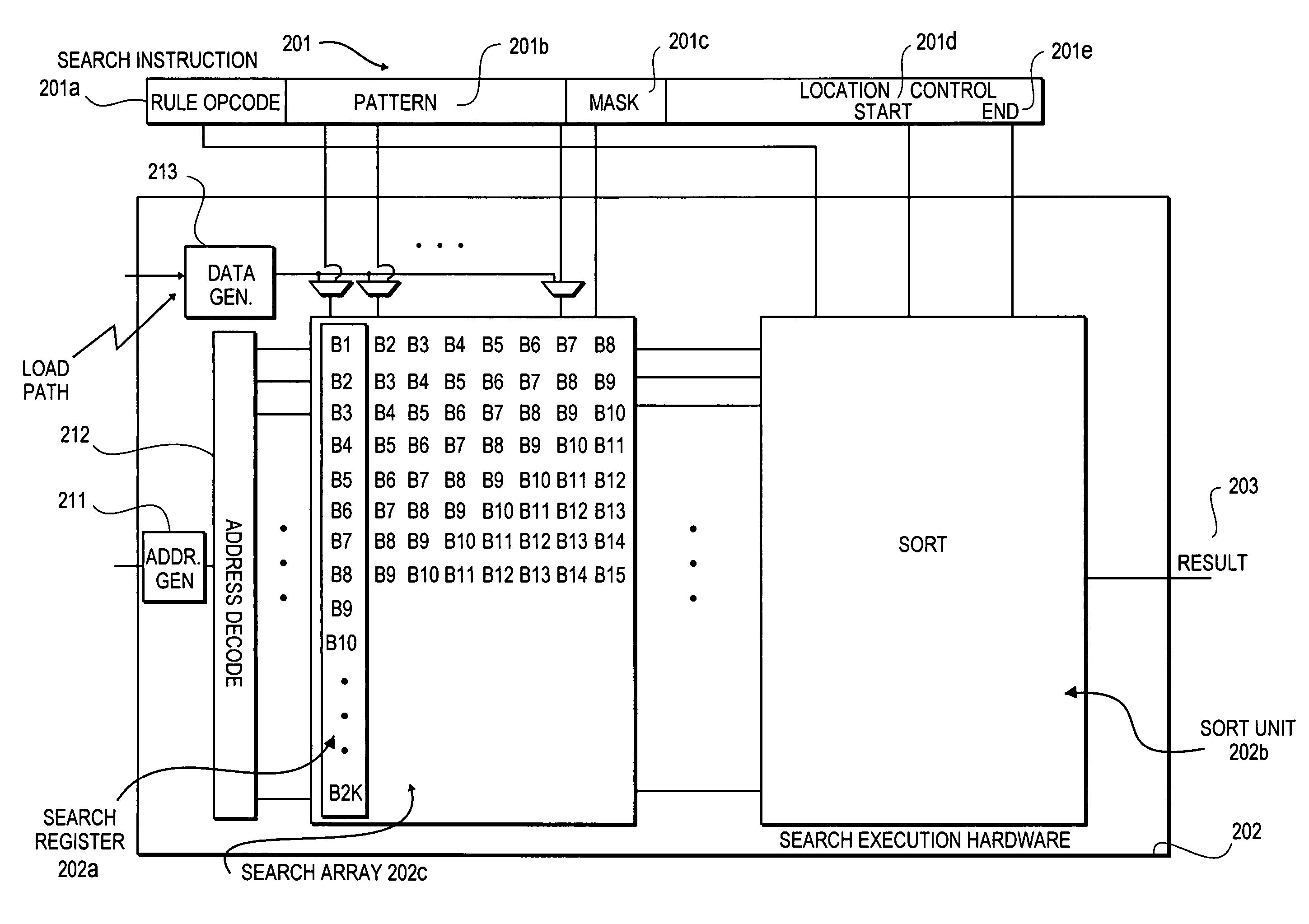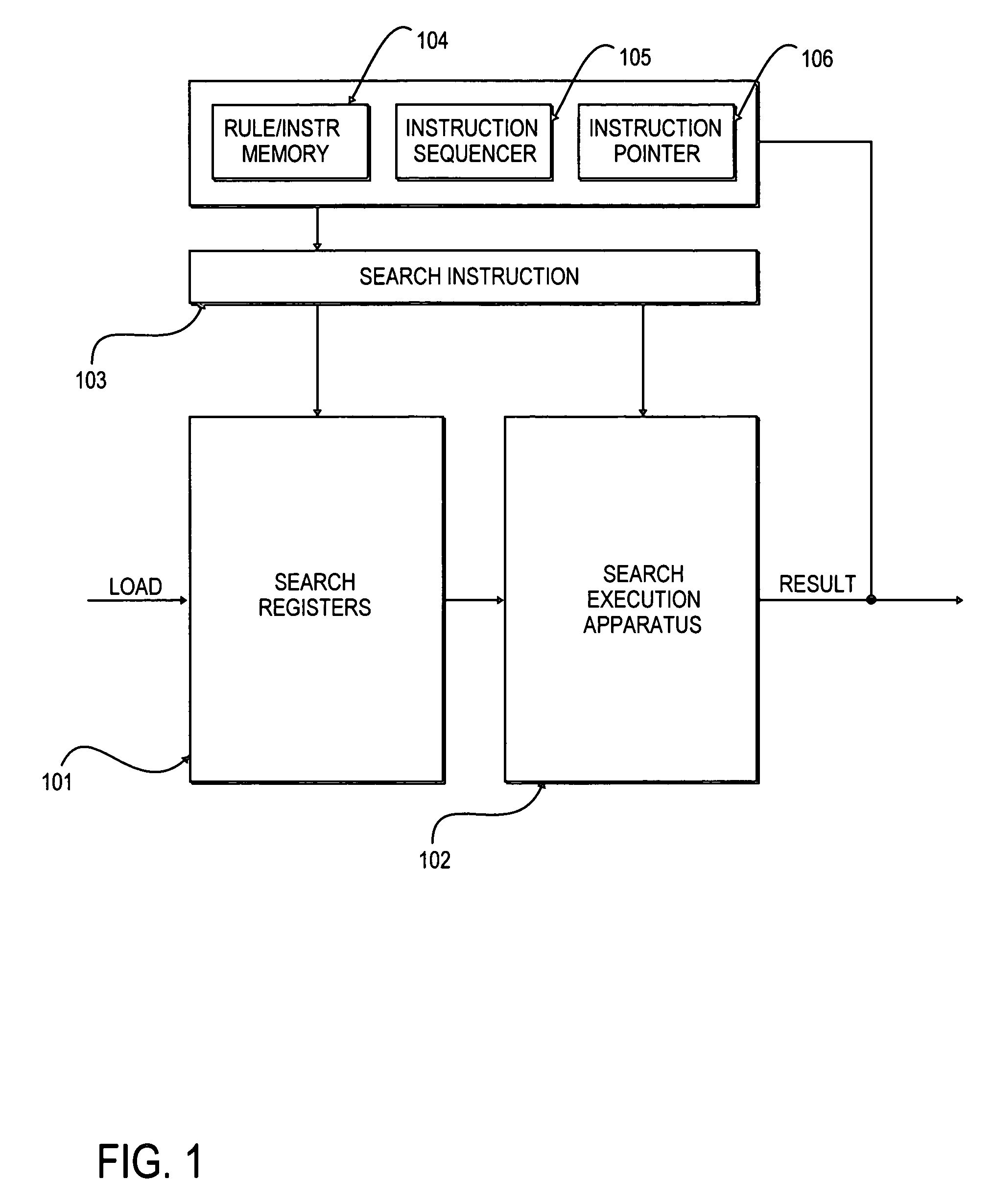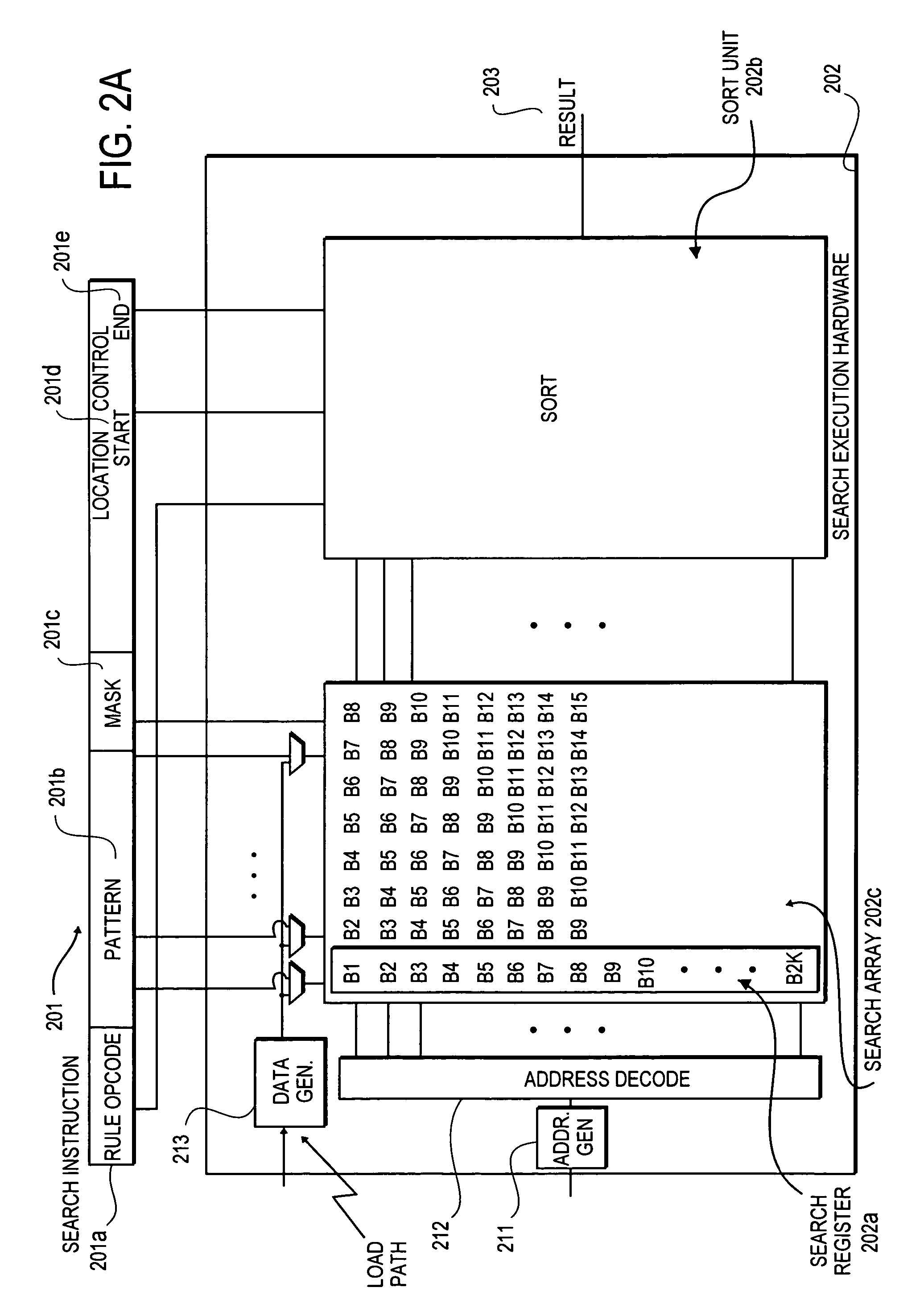Programmable rule processing apparatus for conducting high speed contextual searches and characterizations of patterns in data
a programming rule and contextual search technology, applied in the field of information processing, can solve the problems of increasing the speed at which the content inspection function needs to be performed, requiring computational complexity, and requiring new vulnerabilities
- Summary
- Abstract
- Description
- Claims
- Application Information
AI Technical Summary
Benefits of technology
Problems solved by technology
Method used
Image
Examples
Embodiment Construction
[0031]A programmable rule processing apparatus for conducting high-speed contextual searches of arbitrarily long patterns in a document, message, or other content is described. The rule processor provides an architecture that is tailored for content search and analysis. In one embodiment, the rule processor allows for rapid parallel and recursive sequencing of rules against a content payload, thereby enabling efficient processing of workloads intensive in rule-grammars.
[0032]Architecturally, the rule processor employs a set of input payload search registers. A search register file holds the input data (or content payload) that is to be presented to various search rules. Data can be loaded into the search registers from memory, or moved in and out of the search registers from and to other resources in the rule processor. In one embodiment, a variety of searches may be performed on the content of the search registers. These searches are specified in the form of search instructions or ...
PUM
 Login to View More
Login to View More Abstract
Description
Claims
Application Information
 Login to View More
Login to View More - R&D
- Intellectual Property
- Life Sciences
- Materials
- Tech Scout
- Unparalleled Data Quality
- Higher Quality Content
- 60% Fewer Hallucinations
Browse by: Latest US Patents, China's latest patents, Technical Efficacy Thesaurus, Application Domain, Technology Topic, Popular Technical Reports.
© 2025 PatSnap. All rights reserved.Legal|Privacy policy|Modern Slavery Act Transparency Statement|Sitemap|About US| Contact US: help@patsnap.com



